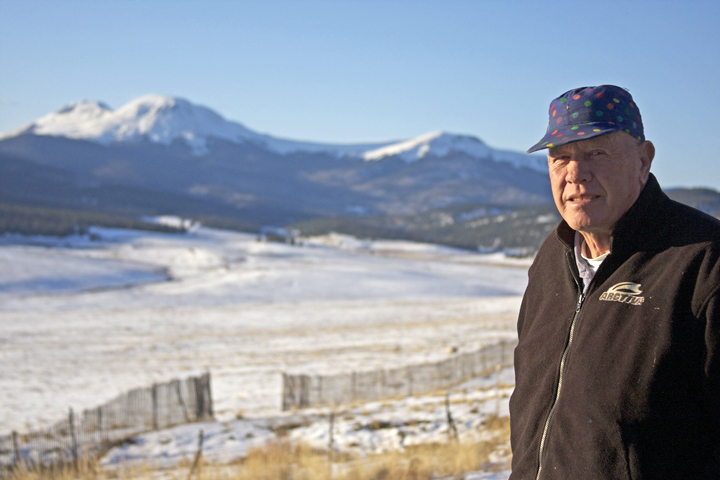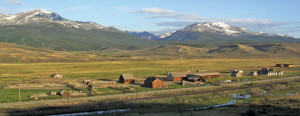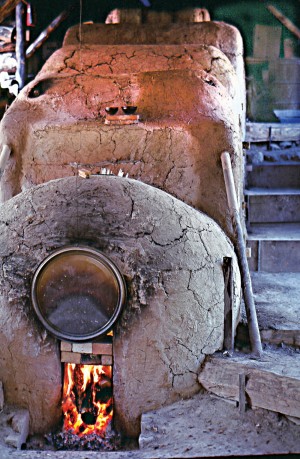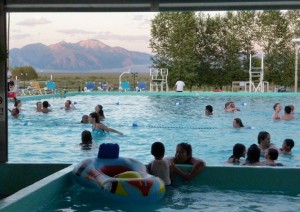By Ron Sering
Area rancher Joe Cogan does not mince words about commercial land development. “I don’t think much of subdividers. They come up to you, shake your hand, and then try to get in your pocket.”
Since 1889, the Cogan family steadily built their area holdings through a combination of leases and purchase, to hundreds of acres. “I had three boys, but two of them decided to do something else for a living.” Cogan soon found himself with more land than he could work. “I divested myself of several leases,” Cogan said. “We kept the land we worked down to a minimum.”
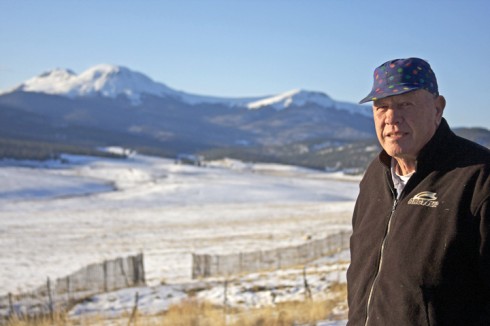
Their holdings included a 507-acre tract in the Chubb Park area of Chaffee County, which drew streams of potential developers. “They used to badger me all the time to subdivide,” Cogan said, “and I didn’t want them to do anything to that beautiful piece of land. That ground was not going to be subdivided. I decided to show the S.O.B.s.”
In cooperation with a Great Outdoors Colorado, the Colorado Division of Wildlife and the Trust for Public Lands, Cogan donated the Chubb Park land to a conservation easement administered by the Land Trust of the Upper Arkansas. Based in Salida, the LTUA manages land throughout the Upper Arkansas River valley. It is one of more than forty land trusts operating throughout the state.
A conservation easement is a legal status for land which restricts the types of activities that can take place on it. “That land [covered under the conservation easement] for the most part stays the same. That is usually the main motivation,” said Andrew Mackie, Executive Director of the LTUA.
“It’s the only way to go if you don’t want the land to be developed,” Cogan said.
The most common types of land protected under a conservation easement are agricultural and ranch lands, wildlife habitat, or land with historical or environmental significance. The criteria LTUA use to determine the suitability of land for a conservation easement include:
• If it is linked to other public or private open space or natural areas
• If it preserves or protects plant or animal species, wildlife habitat and migration corridors, or wetlands
• If the land has historical, geological, or archeological benefit
While land trusts are responsible for administering the conservation easements, landowners still retain ownership of their property as well as the right to pass the land on to heirs. “The landowners still retain the right for all traditional uses of their property, such as hunting, fishing, or agriculture,” Mackie said.
Though not offering the kind of payoff of commercial development, conservation easements do provide a number of financial benefits.
Under terms of the easement, the Cogan’s Chubb Park ranch is still used for ranching and as a wildlife preserve. The Cogans lease the land to another party for ranching on a yearly basis. “I also worked out a lease arrangement with the Department of Wildlife for hunting. And here I used to let people do that for free.”
There are also significant tax advantages. Under current Federal tax law, landowners who donate a conservation easement qualify for a tax write-off on their Federal income tax up 50% of their adjusted gross income. For example, if a conservation easement is valued at $500,000, and the landowner’s adjusted gross income is $100,000, the landowner could take a $50,000 write-off each year.
These tax rules go up for renewal in Congress every year, and “enjoy a lot of bipartisan support,” Mackie said. “They have more co-sponsors on both sides of the aisle than anything else that comes before Congress.” Were the current law to lapse, another set of laws, still granting a tax write-off, would go into effect.
On the state level, landowners donating a qualified conservation easement are currently eligible for state tax credits worth 50% of the easement value, up to a maximum of $375,000. In addition, the Colorado State Tax Transfer Program offers taxpayers the opportunity to sell their credits through brokers to other taxpayers.
Under current inheritance tax law, inherited land can incur a sizeable tax burden on descendants. The Chubb Park land, for example, could be valued as many millions of dollars based on its subdivided value, incurring a significant tax burden. “My kids would have to sell off half of it just to pay taxes on the other half,” Cogan said.
“Conservation easement land has a lower valuation,” Cogan said. “For inheritance purposes, that’s also a tax advantage. Otherwise, it would be assessed based on its value as subdivided land.”
“You will never get as much money from a conservation easement as you can from developing,” Mackie said. “But the land will, for the most part, stay the same.”
What has been christened the Chubb Park Ranch State Wildlife area is currently home to an estimated 500 elk. “I have counted as many as 700,” Cogan said. “It gives me a good feeling to look at that land and know it will never be subdivided,” Cogan said.
For More Information:
Landowners considering donating a conservation easement are encouraged to seek advice. A number of organizations administer conservation easements in the area. Some, like the LTUA, offer workshops on estate planning.
Colorado Coalition of Land Trusts
1245 East Colfax Avenue, Suite 203
Denver, CO 80218 Phone: (303) 271 1577
Website: www.cclt.org
Land Trust of the Upper Arkansas
Andrew Mackie
P.O. Box 942
Salida, CO 81201 Phone: (719) 539-7700
e-mail: info@ltua.org
Website: www.ltua.org
The Nature Conservancy
Nancy Fishbein
Land Conservation Program Manager
2424 Spruce Street
Boulder, CO 80302 Phone: (303) 444-2950
Fax: (303) 444-2986
e-mail: nfishbein@tnc.org
Website: www.nature.org/colorado
Orient Land Trust
Suzanne Ewy, Executive Director
P.O. Box 65
Villa Grove, CO 81155 Phone: (719) 256-4315
e-mail: info@olt.org
Website: www.olt.org
Rocky Mountain Elk Foundation
Brandon Hoffner
0329 Highland Drive
Howard, CO 81233 Phone: (719) 942-3448
Cell phone: (719) 221-5382
e-mail: bhoffner@rmef.org
Website: www.rmef.org

